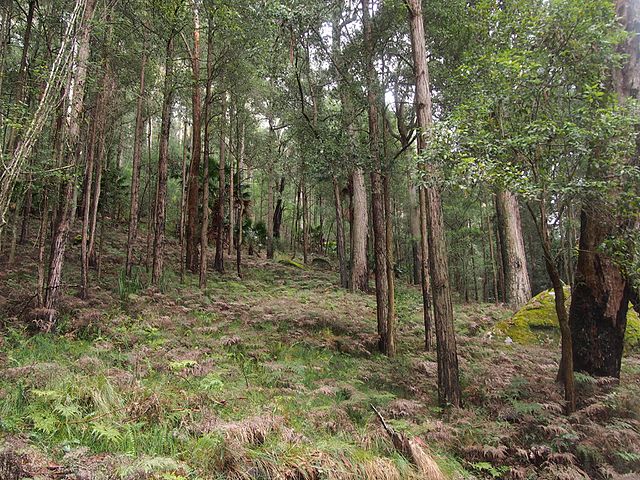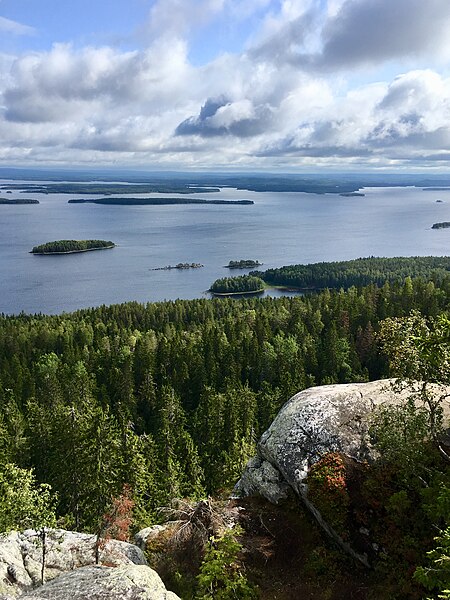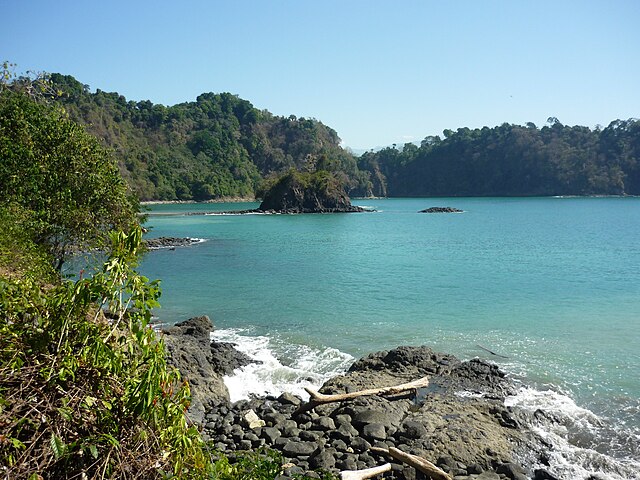The Royal National Park is a protected national park that is located in Sutherland Shire local government area in the southern portion of Sydney, New South Wales, Australia.
A view of the Era beaches on the Royal National Park Coast Track, looking south from Thelma Head
The majority of the park's coastline is dominated by tall cliffs, forming unique features such as Wedding Cake Rock (pictured), facading vast heathland.
Many species of Eucalyptus, such as the Eucalyptus luehmanniana, thrive in the Royal National Park.
The "Forest Island", a section of forest in the park's south mostly flanked by the Hacking River. In raised valley floors such as these, many more species of flora thrive than in other environments of the park.
A national park is a natural park in use for conservation purposes, created and protected by national governments. Often it is a reserve of natural, semi-natural, or developed land that a government declares or owns. Although individual countries designate their own national parks differently, there is a common idea: the conservation of 'wild nature' for posterity and as a symbol of national pride. National parks are almost always open to visitors.
Bogd Khan Uul National Park in Mongolia is one of the earliest preserved areas now called a national park.
National parks often allow protected species to flourish. Pictured are Alpine ibexes (Capra ibex) in the Gran Paradiso National Park, Piedmont, Italy. The Ibex population increased tenfold since the area was declared a national park in 1922.
Landscapes of the Koli National Park in North Karelia, Finland, have inspired many painters and composers, e.g. Jean Sibelius, Juhani Aho and Eero Järnefelt.
Manuel Antonio National Park in Costa Rica was listed by Forbes as one of the world's 12 most beautiful national parks.








